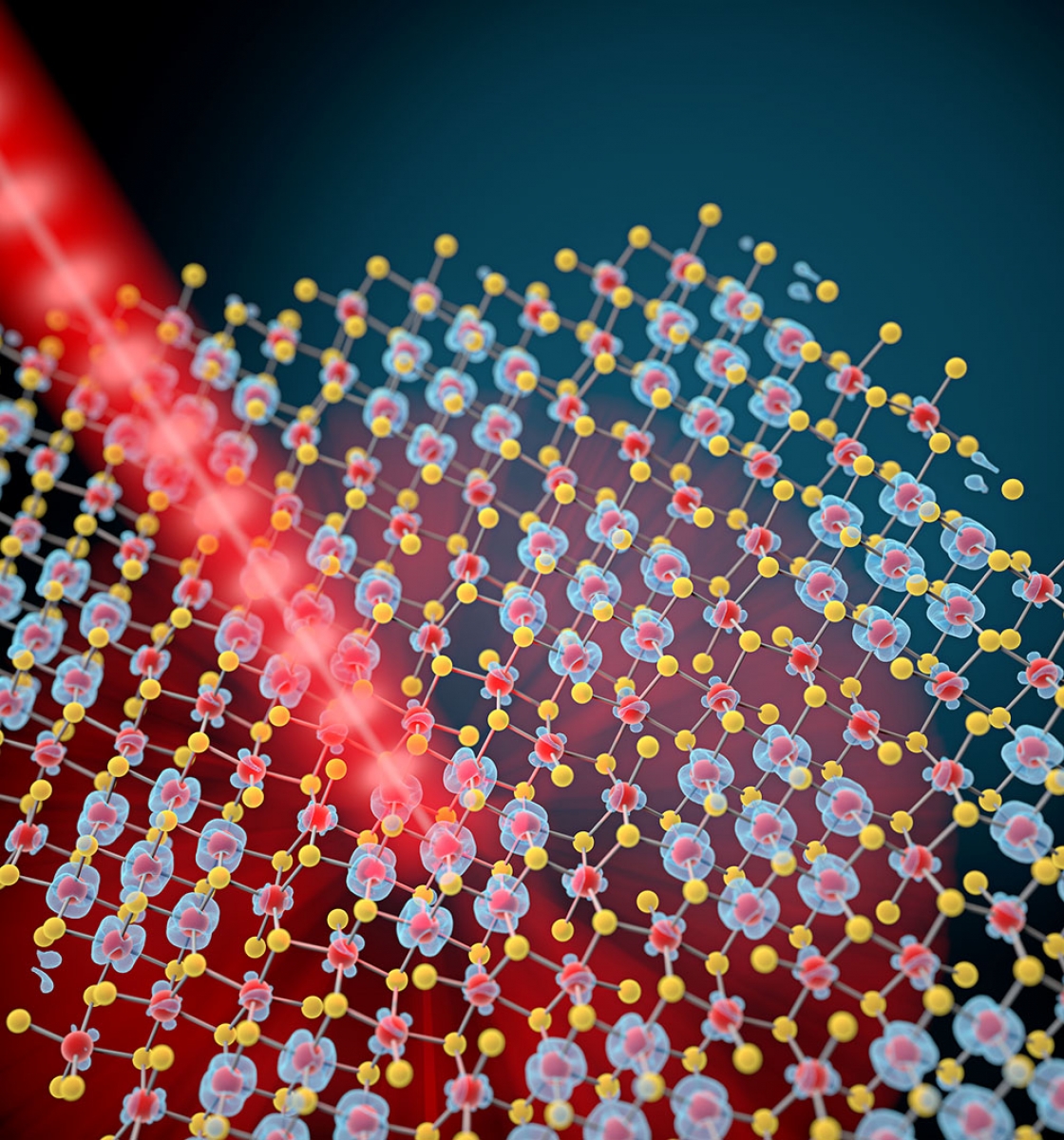Look at any material on an atomic level and you see a dynamic world of interconnected atoms and electrons. Negatively-charged electrons throughout the material swarm around the positively-charged ions, and the electrostatic force between them holds the material together.
At a nonzero temperature, the ions in the material vibrate around their equilibrium positions. Those collective vibrations are called phonons. As the ions move, the electron cloud—as well as its quantum properties—sways accordingly, and vice versa. We call this electron-phonon coupling.
For many quantum materials, the electronic properties, such as whether it will conduct electricity or not, depends on how phonons and electrons are coupled—in other words, how they interact with each other. Understanding those interactions—and manipulating them—is crucial to understanding the world around us.
“How the electrons talk to phonons is a very fundamental physical problem. It determines the properties of many materials, including superconductivity,” said Xun Shi, a postdoctoral researcher in the Kapteyn-Murnane Group at JILA. “People always want to learn how electrons connect to phonons, and it’s a challenge to measure or calculate.”
To study those interactions, you need a very fine scalpel to peel through the jumble of phonons and electrons in a material, and isolate the important ones that determine how the material behaves. And Xun Shi, Yingchao Zhang and Wenjing You at the Kapteyn-Murnane Group have found that scalpel.
In a study published on April 2, 2020 in the Proceedings of the National Academy of Sciences, the team found that by using ultrafast laser pulses, they can precisely pinpoint how electrons and phonons interact, transforming nearly 50 years of theory and understanding.
“We had simple ways of understanding materials since the 1970s, and now we can see that the charges and the lattice are coupled in very intriguing ways,” said JILA Fellow Margaret Murnane. “The ultrafast laser had previously been seen as a hammer, but it’s actually the most beautiful scalpel.”



 The Physics Frontiers Centers (PFC) program supports university-based centers and institutes where the collective efforts of a larger group of individuals can enable transformational advances in the most promising research areas. The program is designed to foster major breakthroughs at the intellectual frontiers of physics by providing needed resources such as combinations of talents, skills, disciplines, and/or specialized infrastructure, not usually available to individual investigators or small groups, in an environment in which the collective efforts of the larger group can be shown to be seminal to promoting significant progress in the science and the education of students. PFCs also include creative, substantive activities aimed at enhancing education, broadening participation of traditionally underrepresented groups, and outreach to the scientific community and general public.
The Physics Frontiers Centers (PFC) program supports university-based centers and institutes where the collective efforts of a larger group of individuals can enable transformational advances in the most promising research areas. The program is designed to foster major breakthroughs at the intellectual frontiers of physics by providing needed resources such as combinations of talents, skills, disciplines, and/or specialized infrastructure, not usually available to individual investigators or small groups, in an environment in which the collective efforts of the larger group can be shown to be seminal to promoting significant progress in the science and the education of students. PFCs also include creative, substantive activities aimed at enhancing education, broadening participation of traditionally underrepresented groups, and outreach to the scientific community and general public.